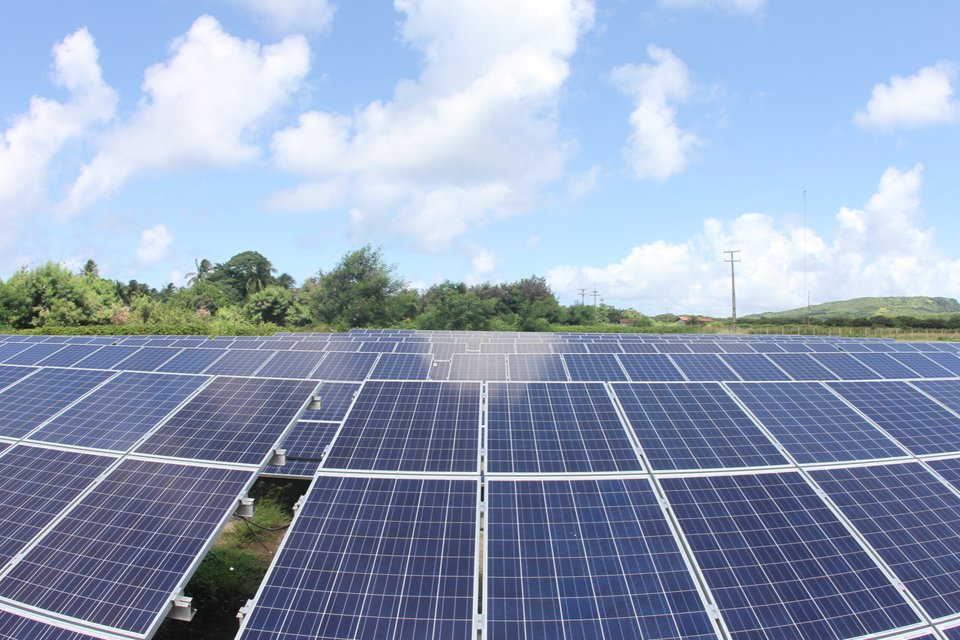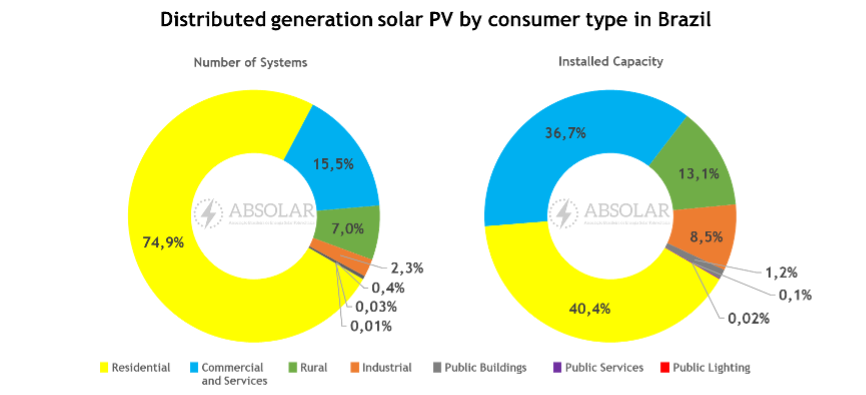Member/Partner News
Solar photovoltaic surpasses 9 gigawatts in Brazil, with 270 thousand jobs and R$ 46 billion in investments, ABSOLAR informs

According to ABSOLAR, the Brazilian solar PV sector can bring more than R$ 139 billion in investments and generate more than 1 million new jobs to the country, in the coming years, with the distributed generation legal framework from renewable energy sourcers, in development and expected to become law during 2021 .
São Paulo, June, 2021 – New analysis by the Brazilian Solar Photovoltaic Energy Association (ABSOLAR) points out that Brazil has just surpassed the historic milestone of 9 gigawatts (GW) of solar photovoltaic (PV) operational installed capacity, in large power plants and small and medium-scale systems installed on rooftops, facades and plots of land. Since 2012, the source has brought more than R$ 46 billion in new investments to the country and has generated more than 270 thousand accumulated jobs.
According to ABSOLAR’s analysis, the advance of solar PV in Brazil, through auctions for large plants or through distributed generation, in homes, small businesses, rural properties and public buildings, is essential to reduce the cost of electricity, reducing the expensive thermoelectric energy and diversifying the country's electricity supply.
In the centralized generation segment, Brazil has an installed capacity of 3.3 GW in solar PV power plants, which represents 1.9% of the country´s electricity matrix. In 2019, solar PV energy was the most competitive among all renewable sources in the two New Energy Auctions hosted by the government that year, A-4 and A-6, with average prices below US$ 21.00/MWh.
Large-scale solar PV is currently the seventh largest power source in Brazil, with power plants in operation in nine Brazilian states, in the Northeastern (Bahia, Ceará, Paraíba, Pernambuco, Piauí and Rio Grande do Norte), Southeastern (Minas Gerais and São Paulo) and North (Tocantins) regions. Accumulated investments in this segment surpass R$ 18 billion.
Adding installed capacities of distributed and centralized generation segments places the photovoltaic solar source in the sixth position of the Brazilian electricity matrix, behind hydroelectricity, wind, biomass, natural gas and diesel and other fossil fuels termal plants. The solar source already represents more than the sum of all installed capacity of coal-fired power plants and nuclear plants, which totals 5.6 GW.
In the distributed generation segment, solar PV reached an installed capacity of 5.7 GW, bringing to Brazil over R$ 28 billion in new investments since 2012, spread throughout the five national regions. Solar PV represents more than 99.9% of the number of distributed generation systems and leads the distributed generation segment by a wide margin.
According to ABSOLAR, the distributed generation legal framework from renewable energy sourcers, in development and expected to become law during 2021, it’s a priority in the current scenario. The legal framework will strengthen socioeconomic and sustainable development during the pandemic period.
For the ABSOLAR’s CEO, Rodrigo Sauaia, the growth of renewable energies will strengthen the diversity and security of Brazil's electricity supply, relieving pressure on increasingly scarce and valuable water resources, as well as reducing the use of expensive, pollutants fossil thermoelectric plants, responsible for the price raising on Brazilians' electricity bills. "The three-year technical study "Integration of Variable Renewable Sources in the Electric Matrix in Brazil", with the participation of the Ministry of Mines and Energy (MME), Energy Research Company (EPE) and National System Operator (ONS), in partnership with the German government entity Deutsche Gesellschaft für Internationale Zusammenarbeit (GIZ), it proved that it is possible to increase the share of clean, renewable and competitive solar and wind sources by more than four times, with reliability, safety and stability of the national electricity matrix ”, he explains.
The study debunked the old myth that the country would depend on thermoelectric plants to support the growth of renewables. “On the contrary: in fact, he pointed out that the balance of the system when there are variations in wind and sun is provided in particular by renewable hydroelectric plants, not by fossil thermoelectric plants. Therefore, the evolution to a 100% clean and renewable electrical matrix is possible and depends more on will and political leadership than on technical and economic conditions”, adds Sauaia.
“Somente na geração própria de energia, o setor solar pode trazer mais de R$ 139 bilhões em investimentos e gerar mais de 1 milhão de novos empregos ao Brasil até 2050, com o marco legal proposto pelo PL nº 5.829/2019”, afirma Ronaldo Koloszuk, presidente do Conselho de Administração da ABSOLAR. “Os benefícios da modalidade somam mais de R$ 173 bilhões no período, com a redução de custos no uso de termelétricas e redução de perdas elétricas, responsáveis pelos aumentos tarifários na conta de luz e pelas emissões de poluentes e gases de efeito estufa do setor elétrico”, conclui.
"Only in distributed generation, the solar PV sector can bring more than R$ 139 billion in investments and generate more than 1 million new jobs in Brazil by 2050, with legal framework in development by the National Congress", says Ronaldo Koloszuk, chairman of ABSOLAR's Board of Administrators. "The benefits of the modality add up to more than R$ 173 billion in the period, with the reduction of costs in the use of thermoelectric plants and reduction of electrical losses, responsible for the tariff increases in the electricity bill and the emissions of pollutants and greenhouse gases in the sector electric”, he concludes.
Residential consumers lead the number of installed systems, representing 74.9% of the total. They are followed by companies in the commercial and services sectors (15.5%), rural consumers (7.0%), industries (2.3%), public buildings (0.4%) and other kinds, such as public services (0.03%) and public lighting (0.01%).
In terms of installed capacity, residential consumers lead the use of solar photovoltaic energy, with 40.4% of the installed capacity in the country, closely followed by consumers in the commercial and services sectors (36.7%), rural consumers (13.1%), industries (8.5%), public buildings (1.2%) and other kinds, such as public services (0.1%) and public lighting (0.02%).

According to ABSOLAR, there are more than 491 thousand solar PV systems connected to the grid in Brazil, bringing financial savings and improved environmental sustainability to over 619 thousand consumer units. Solar PV technology is present in all Brazilian states, with the leaders in installed capacity being, respectively: Minas Gerais, São Paulo, Rio Grande do Sul, Mato Grosso and Paraná.
![Global Solar Council [logo]](/static/images/gsc-logo-horizontal.svg)